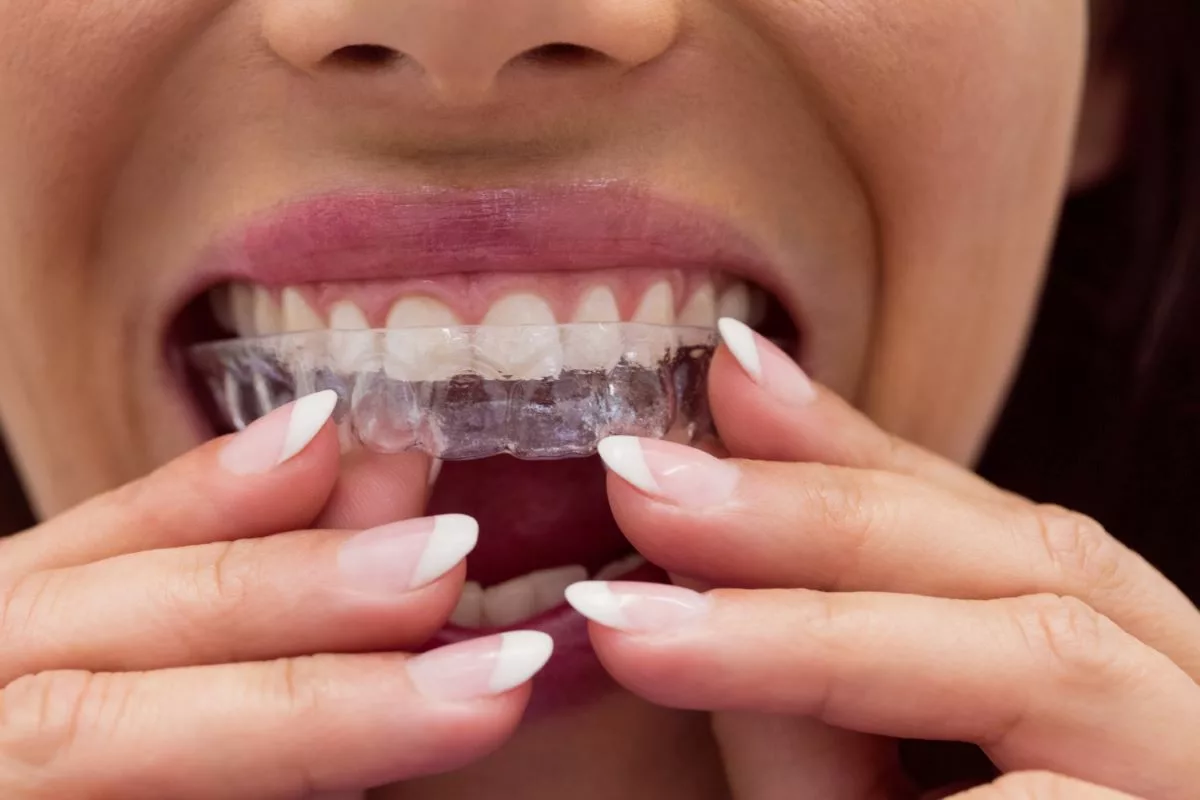
Many people considering Invisalign have heard that it can hurt a lot. But is there any truth to it? Does Invisalign cause pain, or is this just a modern myth passed on because we’ve all heard someone saying that their friend (or cousin – or aunt!) was in agony when they got their teeth fixed?
To guide you, we'll explore what Invisalign is, how it works, and if there’s any truth to the pain myth. We'll also provide tips on how to reduce any discomfort that can occur with the treatment. Read on if you're considering getting aligners or just curious about what others go through.
What Is Invisalign and How Does It Work?
Invisalign is a system of clear, custom-made aligners that gradually shift teeth into the preferred position. Each aligner is worn for two weeks before being substituted with another until your teeth are properly aligned. The procedure might take 12 to 18 months, depending on the seriousness of the issue.
The Invisalign treatment uses gentle forces the aligners create to slowly move teeth into place. The amount of force used is determined by your orthodontist, and they will adjust it accordingly as your teeth move over time.
Is There Any Truth to the Pain Myth Associated with Invisalign?
Are you wondering, does Invisalign hurt? The answer is that yes, it can cause some discomfort — but not a lot. When you first get the aligners, your teeth may feel a bit sore as they adjust to the pressure of the new alignment. But this pain should be minimal and only last a few days – it’s not unbearable and nothing like what people have said in anecdotes.
In terms of long-term pain, no evidence supports the idea that Invisalign is more painful than traditional braces. If anything, it may even be less so since Invisalign aligners are made of soft plastic material and don't have any metal parts like brackets or wires that irritate.
How to Reduce Invisalign Pain That May Occur During Treatment
There is no need to be concerned about the pain or discomfort connected with Invisalign treatment. Many people claim that their discomfort is minor and only lasts a few days. That said, some may experience more pronounced pain, which can be managed through careful attention to the tips outlined below:
Follow Your Orthodontist’s Instructions
If you're wearing aligners from your orthodontist, follow their instructions closely. They'll inform you exactly how and for how long to utilize them.
Don't try to wing it because failing to follow their advice correctly will result in unnecessary suffering. Stick to your strategy, and you'll have a stunning grin in no time.
Stick to a Routine With Your Aligners
Maintaining a regimen with your aligners is the greatest approach to minimizing any discomfort. Put them in the moment you wake up, take them off when it's time to eat or brush your teeth, and put them back in afterward.
You risk feeling uncomfortable if you don't adhere to this regimen consistently. Removing them before indulging in high-contact activities like sports is also necessary.
Use a Cold Compress
Placing a cold compress on the part of your mouth that's feeling sore can help ease any irritation or inflammation. This can be accomplished using an ice pack or an ice cube bag. The proverbial bag of frozen peas works great! You weren't eating them anyway.
Reduced edema and other potential side effects are additional advantages of this. So, if you're feeling pain or discomfort throughout your Invisalign treatment, try an ice pack.
Take Ibuprofen
If you have pain or swelling after getting your braces on, your orthodontist may advise you to take ibuprofen. It's a quick and easy solution to alleviate discomfort while your teeth adjust to their new metal pals. So, if you need it, don't be scared to grab the bottle; your orthodontist has you covered.
Use Wax
If the plastic of your aligners is causing discomfort, then orthodontic wax may be the ideal solution. This product can help cover any sharp edges causing discomfort in the mouth.
In addition, using wax can help you adjust your aligners more quickly and protect the inside of your mouth from any potential damage.
Final Thoughts
Invisalign can cause some pain and discomfort, which is usually temporary. Your unique situation and the severity of your misalignment problem determine the level of pain you feel, but you're unlikely to be miserable or need to miss work or school.
By considering the tips provided, and properly maintaining your aligners, you can mitigate any discomfort associated with Invisalign and enjoy a successful treatment outcome. With the right care, you can have a beautiful and healthy smile in no time. Good luck!
Image by wavebreakmedia_micro on Freepik
Coffee junkie. Spoonie. Writer about all things chronic illness and mental health. Friend of animals everywhere.
Dr. Wilson graduated from Rosalind Franklin University of Medicine and Science and completed her residency in Internal Medicine at Advocate Good Shepherd Hospital in Barrington, IL. Dr. Wilson specializes in providing culturally competent and trauma-informed care to patients with physical disabilities. In addition to her private practice, she works as a science communicator, teaching health literacy to middle school and high school students in her local school district.









